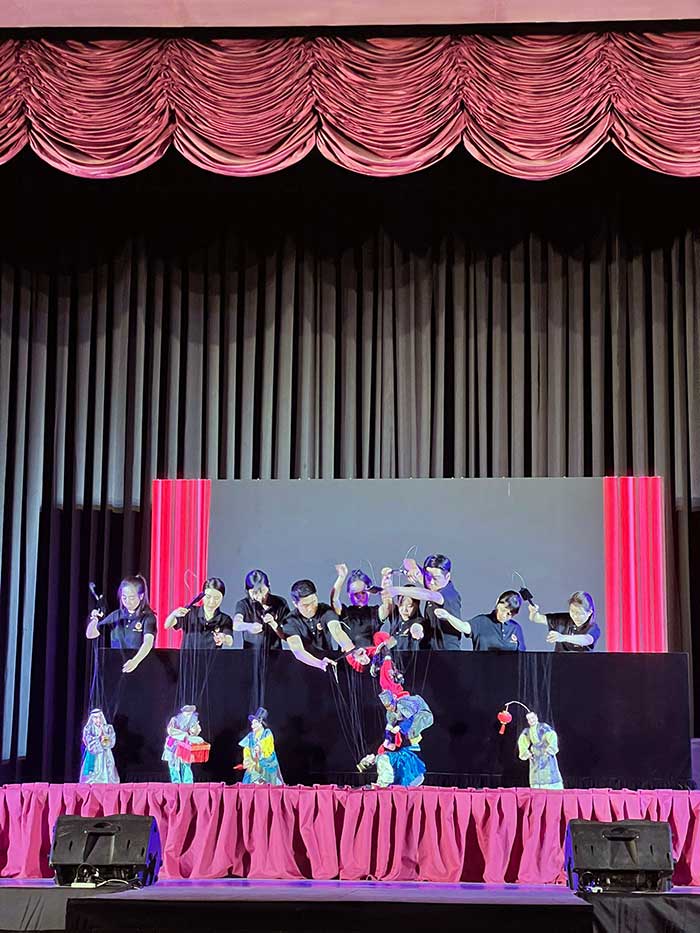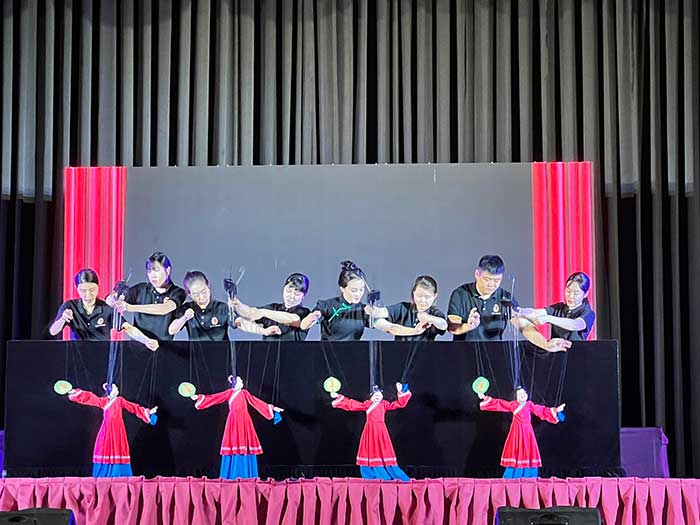By John Anthony S. Estolloso
THOUGH PUPPETRY is a shared dramatic artform by many cultures, it easily adapts to the storytelling traditions of its country of origin, and thus, it transmutes local narratives into dramatic form and projects these onstage albeit in miniature.
For instance, there are the many iterations of Italian puppetry gleaned from the characters of commedia dell’arte, the shadowy projections of the Javanese wayang kulit, and the familiar slapstick of the English Punch and Judy shows. Varied may be the medium of the dramaturgy, one common aspect shared is that they take the viewer from the ordinary theatrics of the big stage and diminishes these to smaller figures, hand-held or manipulated, without losing the characterization essential to the drama.
The weekend witnessed a fascinating display of Oriental puppetry as the world-renowned Quanzhou Marionette Troupe entertained audiences at West Visayas State University’s Cultural Center. As part of the city’s Chinese New Year celebration, the troupe was invited to give Ilonggos a glimpse of one of the specialized crafts considered as part of the province’s intangible cultural heritage (ICH).
The troupe’s performance was composed of five narratives: three gleaned from Chinese folk tales and two as scenes from the Quanzhou province’s traditions and way of life.
First among the stories would be a monologic enactment of a monk journeying to beg for alms. As he makes his way down the path, he encounters a violent storm and despite his prayers and platitudes, he was eventually blown off course. Comically exaggerated in delivery, the puppetry banked more on gestural performative and despite the language barrier, the mimetic aspect of the performance took care of the storytelling.
This amplified pantomimic reenactment was maintained in the next story of the drunken Zhong Kui, a literary master who drowns his woes in wine, even in the afterlife. The intoxication of the character was further ‘hyperbolized’ by the puppet’s fluid movements and without entanglement or misstep, it was even made to lift props and throw these around onstage!
Taking on a more demure portrayal would be the poetess Su Ruolan’s journey in search of her husband. Gleaned from an old folktale, the performance progressed through her troubled path even as it maintains the feminine persona through the marionette’s gestures: elegant, delicate, svelte, and at certain moments, almost poignant in the character’s pathos.
The two final segments were curious vignettes of an almost provincial nature: a monkey with its trainer – that is, the puppeteer – imitates the rounds of animal training and at certain points, the fact that the interaction is between puppet and human person is blurred by the skillful handling of the former by the latter to an almost life-like resemblance. Capping the performance was a rhapsodic montage of festival scenes replete with costume changes, stunts, and febrile dancing – all accomplished by marionettes and the strings that pull them.
The dexterity of the puppeteers was especially highlighted by how they operated these sundry strings without getting these entangled – more so that these are attached to specific segments of the marionettes: minuscule digits and limbs and even to movable miniature props and costumes that the figures themselves lift or change!
*****
Granted that we can relegate much of the ‘reading’ of the puppetry’s theatricality to conventional dramaturgy or take the entire performance as mere entertainment, the projection of the personae was not lost to the audience. What was most interesting was how the puppets almost became extensions of the puppeteers: the male characters manipulated by male puppeteers, female roles (except for a few) by women.
More so, one easily discerned the movement of the performers’ lips as they mouthed the recorded script rising above the canned music even as they manipulated the figures, achieving the effect of a ‘double performance’ and thus underlining the projection of their selves onto the figures the manipulate.
While it is rare for the Ilonggo audience to have such encounters with puppetry, it was nonetheless a refreshingly cultural experience: little figures living out heroic and comic narratives. It was theatre at a diminutive scale but the grandness of it all was not lost to the viewer, much like the strings attached to the marionettes.
[The author is the subject area coordinator for Social Studies in one of the private schools in the city. The photos are from Gretchen Legara.]



























